Renaissance to Modern Art Exam 2
1/24
There's no tags or description
Looks like no tags are added yet.
Name | Mastery | Learn | Test | Matching | Spaced |
|---|
No study sessions yet.
25 Terms
Leonardo da Vinci (Madonna of the Rocks) ca. 1485 - Commissioned by the Confraternity of the Immaculate Conception for its chapel in S. Francesco Grande, Milan (currently in Louvre) Leonardo started in Florence; traveled to Milan in 1481/2; worked for Sforza, the duke of Milan Interests beyond painting – engineering, mathematics, biology/natural world. He is more so into the natural world rather than the idealized versions of the world. Was such a confusing composition he had to redo this painting. He was however known for his smoky transition between forms. Spoumonto
Leonardo da Vinci, (Last Supper), S.M. delle Grazie (Milan), 1495-8- This piece was commissioned for a church attached to a monastery. The reason this is such a well-known piece was because the church was bombed in World War two however this piece survived. He combined oil painting and tempera (egg yolk) Painting, he also paints this on plaster to make it to where he can have longer to paint.
Leonardo da Vinci, (Mona Lisa), 1503-6 - He never finished and delivered this piece he just took it with him. She is suspected to be 24-year-old Lisa Gherardini del Giocondo, wife of a Florentine merchant.
Giorgione, (The Tempest), ca. 1506 - Giorgione had a brief career as he had died from the plague. Poesie- Painted pastoral poems. This was a contemporary literary revival of ancient pastoral verses. This was painted on CANVAS, and not wood. He was known for sensuous nude figures and landscapes.
Titian, (Pastoral Concert), ca. 1510 - Assistant of Giorgione. Was about 20 when he started working with Him. Pastoral idyllic landscape which also holds an allegory on invention/poetry which evokes love and Innocence of ancient roman pastoral (in the countryside) poetry. Colore- the blending between forms in venetian painting, emphasis on color rather than contour line
Perugino, (Christ Delivering the Keys of the Kingdom to Saint Peter), Sistine Chapel, Vatican, 1481/82- Apostolic succession, a notion that Peter is the first pope. Alberti’s Ideal city (on the art of building) has a Tempietto; Alberti based on Virviutus.
Michelangelo Ceiling/ Sistine Chapel, Vatican, 1508-12- Massive barrel vault with trompe-l’oeil architectural Framework. Lunetes and spandrels above windows and ancestors of Christ. This basically made him seen as a Genius. However, he hated this and complained a lot. Details of ignudi- obsession over the body and basically Paintings Of nude androgynous bodies.
Raphael, Philosophy (School of Athens), Stanza della Segnatura, Vatican Palace, 1510/11- Plato is pointing up to the heavens while Aristotle is reaching for the earth. They are surrounded by other figures associated with the pillars of knowledge. It's said that in the front there is Michelangelo sculpting.
Bronzino (Allegory with Venus and Cupid) mid 1540s- This is so bizarre. It was a gift for the French king
commissioned by a duke, in order to appease the French king as he was seen as a threat. No one know what the allegory is supposed to be representing. There is very little balance and structure. Apparently The metachi court likes things to not be easily understood.
Gentile Bellini, (Portrait of Mehemend 11), Istanbul, oil on canvas 1480 - This man is the conqueror of the Empire Constantinople. He was now trying to repopulate the city, as well as uniting the east and the west, this can be seen in this portrait as it is usually frowned upon in the Islamic culture to display figures in art.
Gentile Bellini, (Seated Scribe), Istanbul 1479-81, pen in brown ink with watercolor on gold paper- This piece is depicted of one of the boys that attended the school in the court as they learned fighting, writing, Art and other things. This aesthetic could be taken as ottoman but also persian.
Sinan, (Süleymaniye Complex), Istanbul, 1550-57
Plan
Mosque of Süleyman (exterior)- There is no baptistry in this complex as it is muslum.
Matthias Grünewald, (Isenheim Altarpiece), painted and gilt limewood, ca. 1500-1515 - A representation of Jesus on the cross contorted which represented a disease that came from eating grain with a fungus on it.
(The Buxheim St. Christopher), mid 15th century, colored woodcut-
Martin Schongauer,(Demons Tormenting Saint Anthony),1480/1490 - intaglio painting engraving
Albrecht Durer, (Four Horsemen of the Apocalypse), 1497/1498- This painting was part of a series known as Apocalypse. These printed books secured his fame as a renowned print maker. He is inspired by Martin Schongauer.
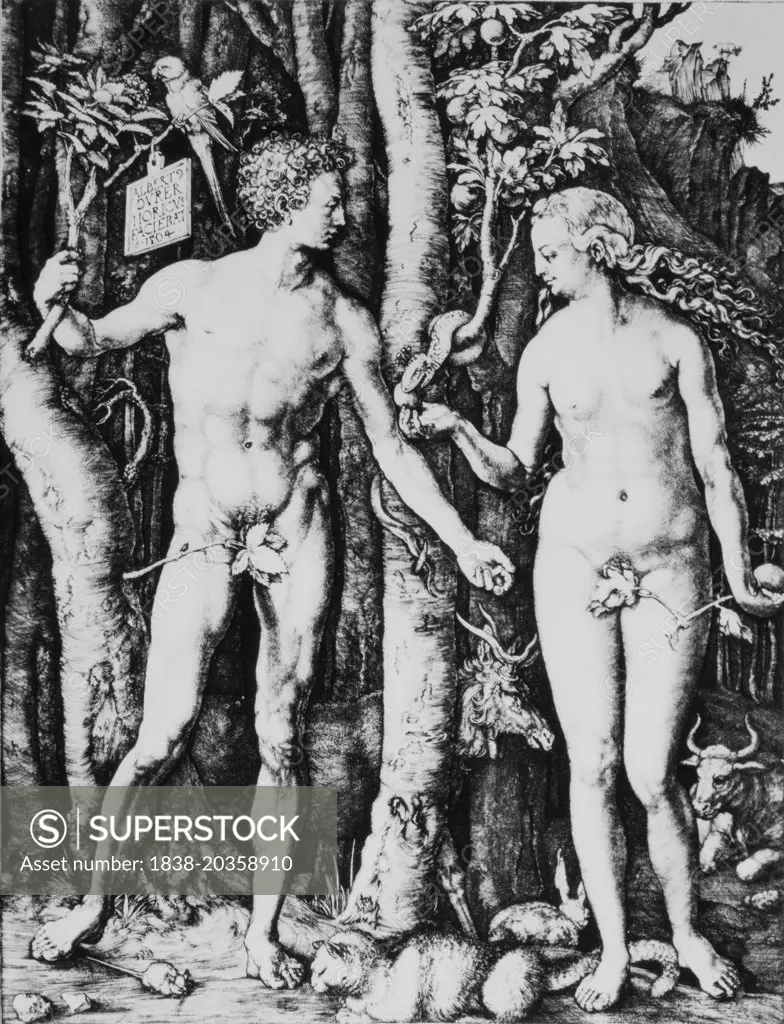
Albrecht Durer, (The Fall of Man,Adam and Eve,), 1504- This print is a marvelous engraving. This scene is Right before Adam and Eve eat from the tree of knowledge. An idea that your body is balanced by four humeri, and When Adam and Eve were in the garden their humerus were balanced, but when they fell, they became unbalanced. The humerus is Flem, blood, black bile, yellow bile, when these fall out of balance, they can cause sickness. The Animals surrounding Adam and Eve are represented with the different humerus.
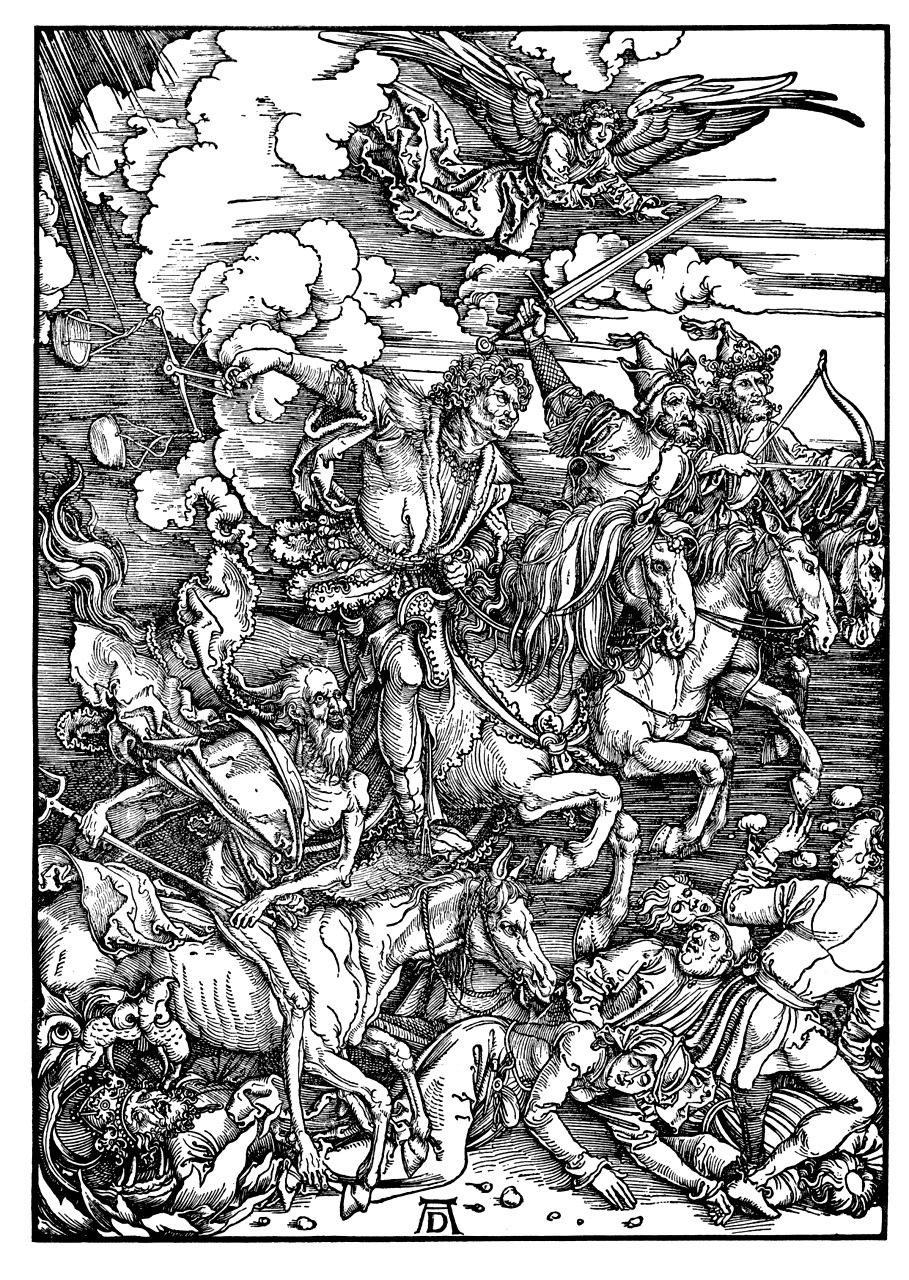
Albrecht Durer, (Four Horsemen of the Apocalypse), 1497/1498- This painting was part of a series known as Apocalypse. These printed books secured his fame as a renowned print maker. He is inspired by Martin Schongauer.
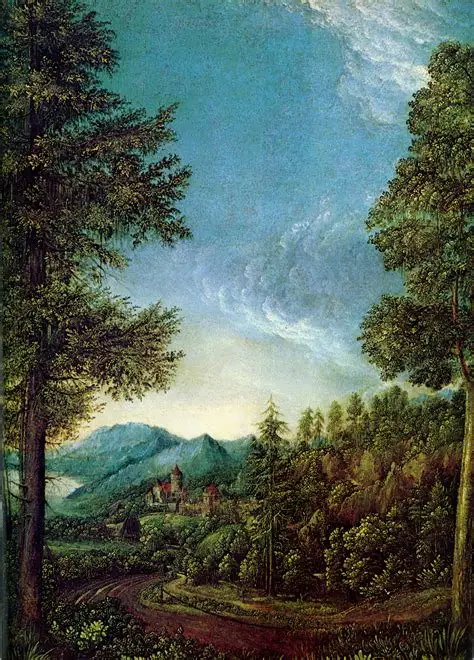
Albrecht Aldorfer, (Danube Landscape), 1525. Oil on vellum on wood panel- First real landscape we've seen so far as it contains no human figure at all.
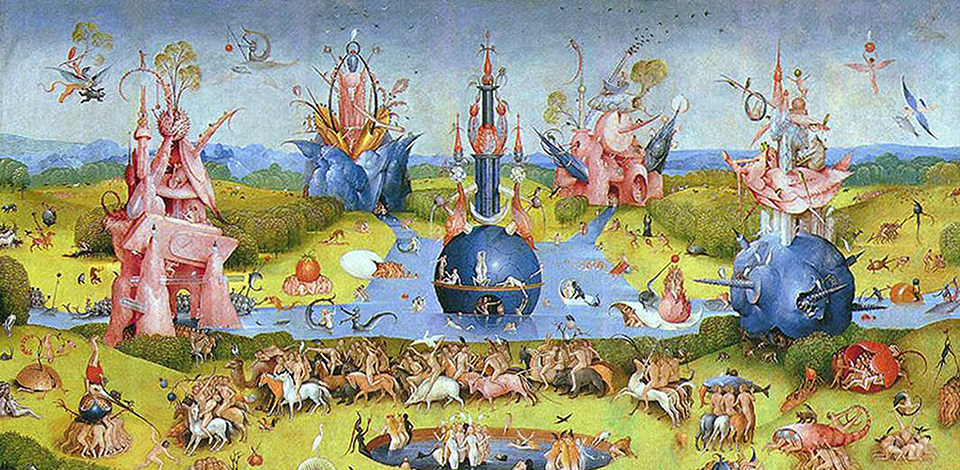
Hieronymus Bosch, (The Garden of Earthly Delights), triptych oil on wood, 1490-1500- Hieronymous Bosch From Hertogenbosh which was the largest city in the region of Brabant at the time. He comes from a family Of painters, but he is married to a woman who is the daughter of pharmacists, which might have a lot to do with Why is his work so bizarre? A potential allegory of alchemy fused with the religious annotations of the fall of man. This painting ended up in the Brussels townhouse of hendrik the second of Nassau, regent of the Netherlands, 7 Years after completion.
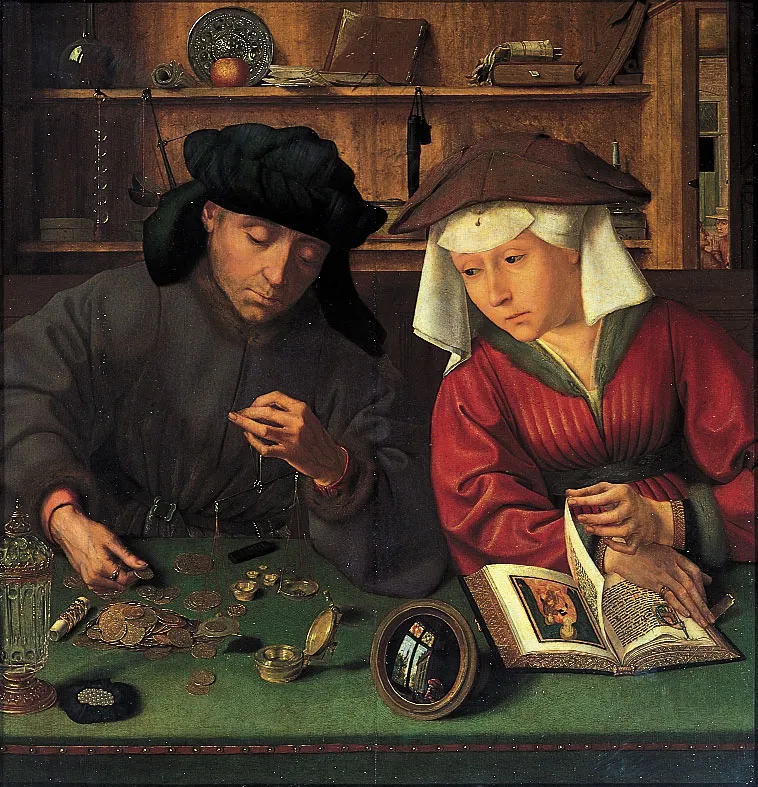
Quentin Massys, (Moneychanger and His Wife), oil on wood, Antwerp, 1514- An image that Represents just practises. There is an inscription on the frame that says you will have honest balances and honest weights. Which basically says that it is a form of righteous living.
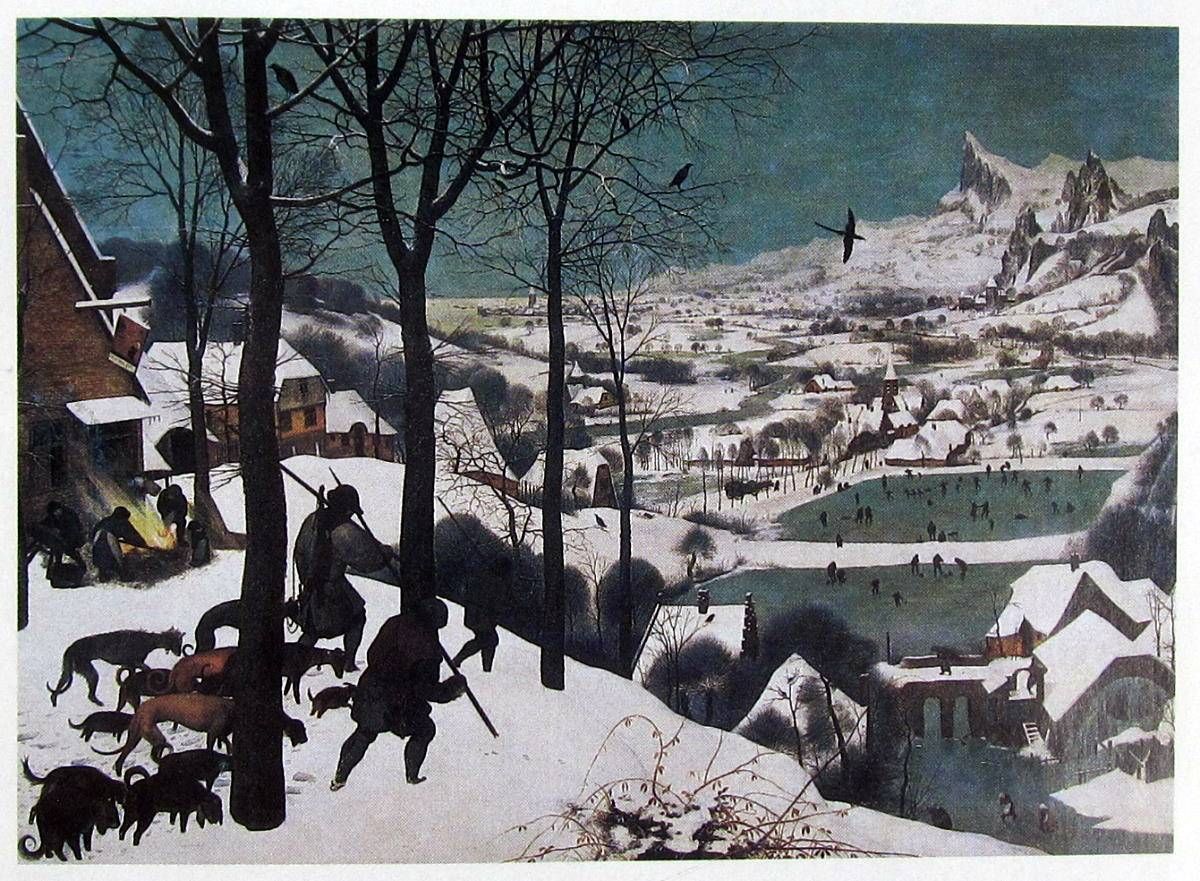
Pieter Bruegel the Elder, Return of the Hunters, oil on wood, Antwerp, 1565- This artist Is from the Netherlands which is a very widespread protestant iconoclasm. In 1568 there was a revolt that started the 80 years’ War. This artist is basically making art to avoid any sort of religious take. It can illude religious interpretation, however, would and could be considered a landscape. Ment to decorate the house of a merchant.
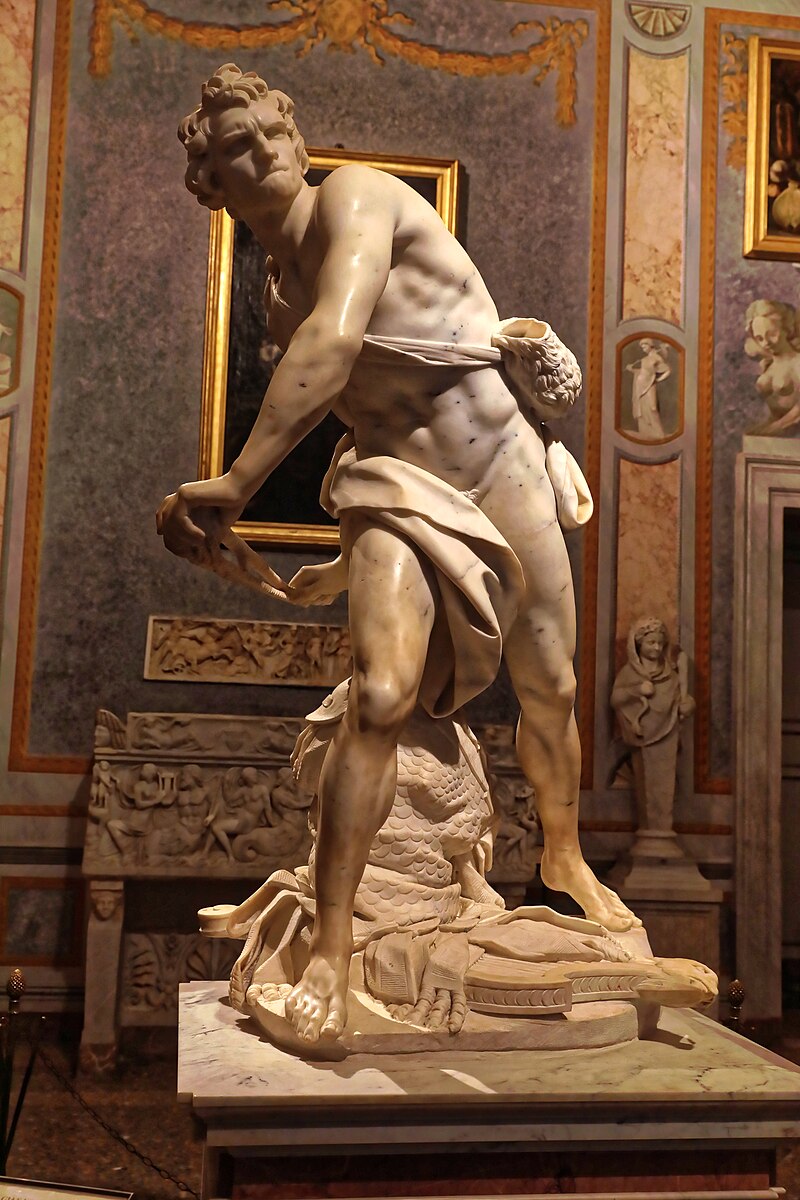
Bernini, (David), 1623- Bernini is most famous as a sculpture. This is his version of David. Commissioned by a cardinal. Shows how Baroque is essentially showing that this David is not calm like his ancestors and posed In the exact moment where he is going to let his sling fly. There is motion and drama.
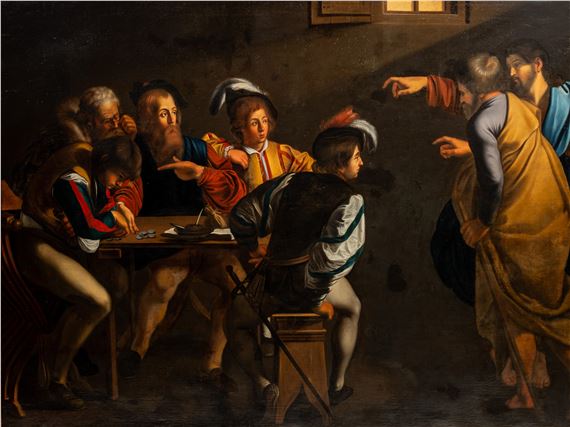
Caravaggio, The Calling of St. Matthew, oil on canvas, Contarelli Chapel, San Luigi dei Francesi, 1599-1600- This painting is one that shows us that Caravaggio wasn't well liked in his time. The theme of this painting was To call people back to the church. When Caravaggio was learning art he spent some time in Milan, which so did Leonardo Davinchi, and you can see in this work with carascurro, spumato, and even with the gestures in the bodies. He also is using Tenebrism= Shadowy and stark contrast. Carravaggio though is still using live models with this Piece and it is greatly inspiring counter affirmation painting as it shows a realistic side to this religious story.
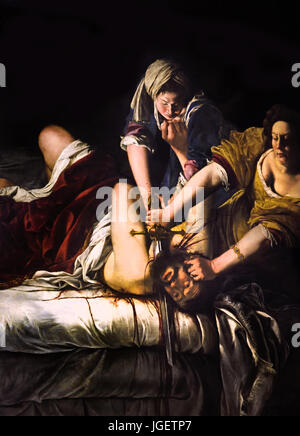
Artemisia Gentileschi, (Judith Slaying Holofernes), oil on canvas, ca. 1619-1620- This artist Was greatly inspired by Caravaggio and known greatly in her own right. In this work she is using tenebisim, with also having The models look like themselves. She is also well known for painting heroic women from mythology. Judeth Seduced and killed Holofernes as he was going to kill all the jews. So a badass woman. Which could also explain Why she paints these things as she wants to claim her place in a more male dominated world. Her in might have been Her father but really she outperformed him.